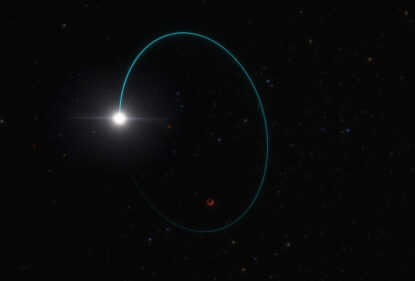Selection of 12 facts about the planet closest to Earth in the Solar System.
1. The diameter of Venus is 12,100 km (only 5% less than the Earth’s), the gravity on its surface is 90% of the earth’s. Because of this, the planet is sometimes called the “sister of the Earth”.
2. The surface of Venus is constantly hidden by a thick layer of clouds. Because of this, before the beginning of the space age, conditions on the Venusian surface were unknown and remained the subject of various speculations.

3. The atmosphere of Venus consists of 96% carbon dioxide, its pressure at the surface is equivalent to 92 atmospheres. This creates a powerful greenhouse effect. Because of it, the surface temperature of the planet is 470 °C. This is above the melting point of lead, tin and zinc.
4. The density of the atmosphere of Venus is 6.5% of the density of liquid water on Earth. Under these conditions, carbon dioxide actually acquires some properties of a liquid.

5. Venus has no magnetic field. Because of this, the solar wind gradually “blows out” all the light gases from it, including water vapor, which is contained there in small quantities. It was believed that it could be a remnant of an ancient ocean that supposedly existed on Venus in the distant past.
6. Unlike most planets in the Solar System, Venus rotates retrograde — in the direction opposite to its orbital motion.
7. Venus makes one orbit around the Sun in 224 Earth days, while the rotation period of the planet around its axis is 243 days. Thus, the Venusian year is shorter than the Venusian day, counted in the “stellar” coordinate system. However, the solar day there lasts 117 Earth days.

8. Most of the details of the relief of Venus are female names. The only exceptions are the Alpha and Beta regions, as well as the Maxwell Mountains.
9. Analysis of radar maps of Venus has shown that its surface is quite young. It is mostly covered by plains formed as a result of volcanic activity. Approximately 300-500 million years ago, the planet experienced some kind of event, due to which almost its entire surface was flooded with lava flows.



10. In the XVII-XVIII centuries, some astronomers announced the discovery of a moon of Venus, even named Nate. However, subsequent observations have shown that this is a mistake. Thus, Venus and Mercury are two planets of the Solar System that do not have their own moons. There is a theory that in the distant past, Mercury could have been a moon of Venus.
11. Extreme atmospheric conditions make Venus one of the most difficult planets to study in the Solar System. None of the descent vehicles that landed on its surface worked there for more than two hours.




12. In the second half of the 1960s, NASA developed a project for a manned flyby of Venus based on equipment created for the Apollo program. The launch of the spacecraft with three astronauts was scheduled for October 31, 1973. The expedition would have reached its goal on March 3, 1974. The flight plan provided for radar scanning of the Venusian surface and dropping 14 unmanned probes on it. The return to Earth was to take place on December 1, 1974. But due to the reduction of space budgets, the project remained on paper.
Follow us on Twitter to get the most interesting space news in time
https://twitter.com/ust_magazine



